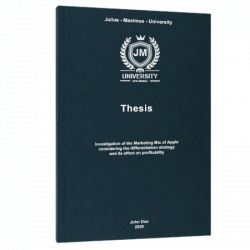
Quantitative research is an integral undertaking that helps researchers collect and analyse data to provide an accurate report. Therefore, in this article, we are going to look at important aspects of quantitative research, such as who uses it, when it is used, and its pros and cons. We have also included FAQs to help you understand the topic quantitative research.
Quantitative Research: Definition
Quantitative research is used by scholars looking to quantify the problem by generating numerical data that can be transformed into useful statistics. The method is used to quantify opinions, behaviours, attitudes, and many other defined variables and then generating results based on a larger sample population.
Quantitative Research Methods
Survey research is an essential tool in quantitative analysis. It can also be distinguished into four methods, such as survey research, correlational research, casual-comparative research, and experimental research.
Survey Research
Survey research is the most important for quantitative outcome research studies and methodologies. Surveys are used to ask questions to a given group of respondents using various tools such as online surveys, online polls, paper questionnaires, e.t.c.
Correlational Research
This involves a systematic comparison of two entities. This type of research is mainly conducted to reveal the relationship between two closely-knitted entities and how they impact each other. It is also carried out to give the value to two or more naturally occurring relationships.
Casual comparative research
This method mainly depends on comparison and is also known as experimental research. Researchers use this method to find out the cause-effect equation between various variables where a given variable is dependent on their other.
Experimental research
This method can also be referred to as experimentation and is heavily reliant on a theory. Just like the name suggests, it is based on one or several assumptions. These are theories that have not to be proven in the past and are, therefore, hypothetical. Thus, the research is carried out to prove or disapprove the statement.
Focus Group
In focus groups, researchers tend to engage a small group of participants in conversations that are designed to generate qualitative data that are relevant to the research questions. Focus groups can have between 5 and 15 participants. Most of the time, scientists use these focus groups to evaluate an event or trend within a given community.
Content Analysis
This method is mostly used by sociologists to analyse social life by carefully interpreting words and images from art, documents, music, e.t.c. The researchers observe how words and images are used within a given community to understand the aspects of their social life. They also take note of the contexts in which they are used so that they conclude a given culture.
Thesis Printing & Binding
You are already done writing your thesis and need a high quality printing & binding service? Then you are right to choose BachelorPrint! Check out our 24-hour online printing service. For more information click the button below:
How to Analyse Data
In quantitative research, data collection accounts for the significant section of the study process. However, to make sense, this data has to be thoroughly analysed. In quantitative research, many methods can be used to analyse data.
Cross-tabulation
Cross-tabulation is a widely used form of quantitative data. It is mainly preferred because researchers use the standard table form to draw conclusions based on various sets of data. It features data that are interconnected.
Trend Analysis
This is a statistical method that helps to provide the ability to observe the data and details that have been sourced over a lengthy duration. It is used to collect feedback regarding data changes over a given period and also to help understand the differences in variables.
Quantitative Data Analysis: Steps
You want to start by relating measurement scales with available variables. Try to associates scales such as interval, ordinal, nominal, and ratio with the chosen variables. This is an important step, and you have to arrange everything carefully to avoid possible errors.
The next step involves connecting descriptive statistics with data. You want to link descriptive stats to encapsulate data. Establishing a pattern might be hard in the raw data. The most commonly used descriptive stats include; mode, mean, median, frequency, percentages, minimum and maximum values. From there, you will decide on a measurement scale and select the right tables to represent data and then analyse the data collected.
Advantages & Disadvantages

- Quantitative research can be tested and checked. This method needs careful experimental design and the ability to replicate the test and results.
- It entails straightforward analysis. When quantitative data is collected, the nature of results will reveal the right statistical tests to use. This means that the interpretation and presentation of findings are straightforward and less prone to error.
- Research that entails complex data and stats is considered to be impressive and valuable since most people do not understand the calculations involved.

- It might have some false focus on numbers. This method of data collection and analysis is quite limited in its pursuit of solid statistical relationships, which might compel the researchers to overlook the broader themes and relationships.
- It might cause difficulty in setting up a research model. When conducting quantitative research, you need to come up with a hypothesis and come up with a transparent model for accumulating and analysing data. Any form of errors or mistakes when feeding the details might invalidate your results.
- Quantitative research might also be misleading since most people tend to believe that it tends to be more scientific or credible than observational or qualitative research. However, this should not be the case since all sorts of research can be misleading and hard to interpret, depending on personal knowledge and skills.
Quantitative Research - FAQ
Quantitative research is used by researchers looking to quantify the problem by the use of numerical data that can be changed into useful statistics. It is the opposite of qualitative research.
It is called quantitative research because it relies mainly on quantitative data from the research study.
The quantitative research approaches include study population and sampling, data collection, and data analysis.

